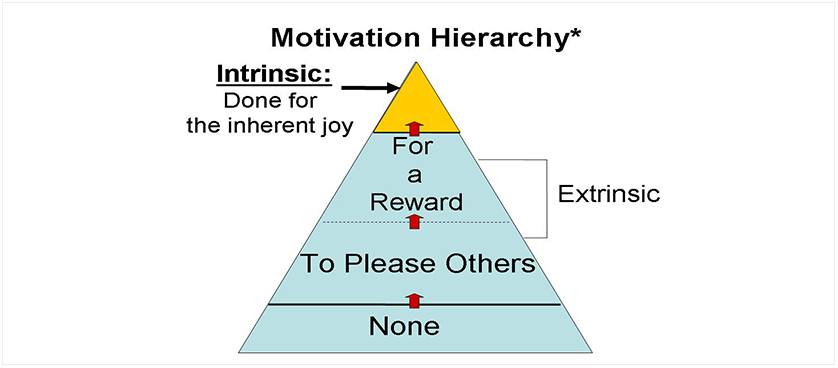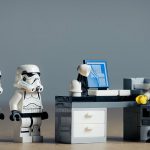What is more effective in motivating the employees? Positive or negative motivation?
 Employees are the most valuable asset of an organization. It is very important that they are motivated to do their jobs well, making the most of their time and skills within the company. But before being employees, they are humans, with their own needs and desires that are not always aligned with the company’s goals. Motivating employees thus becomes the key factor in achieving performance.
Methods for motivating employees are generally divided into positive and negative methods. When using positive motivation one offers an employee a bonus, a reward, be it monetary or not, for completing his task. Negative motivation refers to applying a form of ‘punishment’, a negative reinforcement, to an employee for not accomplishing his task. The aforementioned “punishment” can be either financial or psychological. The consensus on which of the 2 methods is more efficient is that positive motivation is more lucrative than the negative one.
A recent study, published by Professors Kelly Goldsmith of Northwestern University, USA, and Ravi Dhar of Yale University, USA, sheds new light on this topic. The two researchers have designed a simple test that required a group of students to solve anagrams. The first group would receive $25 cents for each correct anagram. The second received $1.5 at the beginning and they were told that they would lose 25 cents each time they failed to solve a puzzle. While both groups of students solved, on average, the same number of anagrams, the negative-framed group spent more than five minutes, longer than the other group, trying to complete the puzzles. This suggests that negative motivation was more effective for motivating the students.
Employees are the most valuable asset of an organization. It is very important that they are motivated to do their jobs well, making the most of their time and skills within the company. But before being employees, they are humans, with their own needs and desires that are not always aligned with the company’s goals. Motivating employees thus becomes the key factor in achieving performance.
Methods for motivating employees are generally divided into positive and negative methods. When using positive motivation one offers an employee a bonus, a reward, be it monetary or not, for completing his task. Negative motivation refers to applying a form of ‘punishment’, a negative reinforcement, to an employee for not accomplishing his task. The aforementioned “punishment” can be either financial or psychological. The consensus on which of the 2 methods is more efficient is that positive motivation is more lucrative than the negative one.
A recent study, published by Professors Kelly Goldsmith of Northwestern University, USA, and Ravi Dhar of Yale University, USA, sheds new light on this topic. The two researchers have designed a simple test that required a group of students to solve anagrams. The first group would receive $25 cents for each correct anagram. The second received $1.5 at the beginning and they were told that they would lose 25 cents each time they failed to solve a puzzle. While both groups of students solved, on average, the same number of anagrams, the negative-framed group spent more than five minutes, longer than the other group, trying to complete the puzzles. This suggests that negative motivation was more effective for motivating the students.
In a similar experiment, conducted by professor Goldsmith and professor Dhar in September 2013, hundreds of participants, across a wide age-range, from Amazon’s Mechanical Turk were asked to solve anagrams. The results matched the ones from the first experiment.
However, as professor Goldsmith and professor Dhar emphasize , the results of this study should not be generalized to all workers. Given that employees have different personalities, goals and desires, using the same motivational methods would be a mistake. Instead, the employer should focus on providing the employees with meaningful tasks and an engaging working environment. Intrinsic motivation is more effective than extrinsic motivation. Punishments, as well as rewards, may not mean much for an employee who is not engaged in his work.
The Retention subcategory of Human Resources functional area contains Key Performance Indicators that can be used to measure employee motivation and satisfaction at the workplace. The Top 25 HR KPIs of 2011-2012 report presents the most viewed HR indicators, according to our site’s traffic statistics.
References:- Goldsmith, K. and Dhar, R. (2013), Negativity bias and task motivation: Testing the effectiveness of positively versus negatively framed incentives, Journal of Experimental Psichology: Applied
- Goldsmith, K. and Dhar, R. (2013), To motivate, better to take away than to give, Kellogg Insight
- Pierce, W. D., Cameron, J., Banko, K. M. and So, S. (2003), Positive effects of rewards and performance standards on intrinsic motivation, The Psychological Record, 2003, vol. 53, pages 561-579

Tags: Employee Motivation, Human Resources performance, Kelly Goldsmith, Northwestern University, Performance in USA, Ravi Dhar, Yale University




